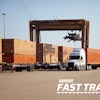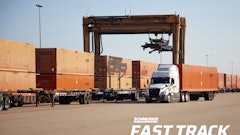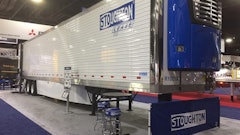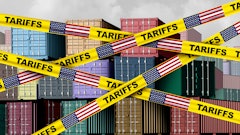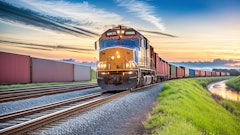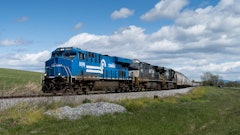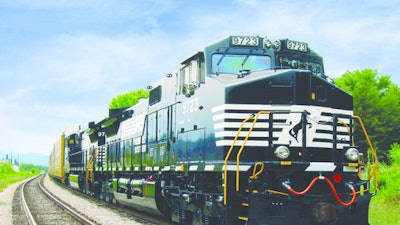
Modern freight railroads have extremely effective data gathering capabilities, and new technology is expanding the ability to track interline shipments and better predict estimated time of arrival (ETA).
About 60-70% of individual freight rail shipments move across multiple railroads. You might have a shipment of frozen peas that leaves a processing facility in the Midwest headed for a distribution center in the Southeast. How do you track progress along the way—and anticipate delays—when the shipment moves from a shortline railroad to one or more Class 1s and then back to a shortline?
Even though there are more than 600 railroads in North America, tracking rail shipments should be simpler—no jumping from one online system to another or analyzing hundreds of rows of data.
The rail industry has been investing in machine learning and data sharing to enable shippers to better manage their freight rail operations. The goal is to create customized, accurate and near real-time data products with functionality such as shipment tracking, electronic billing and railcar repair status.
Shippers and others dealing with the supply chain issues should have more information so they can make better decisions.
GPS is great, but it won't tell you what's happening with a single railcar. That’s why shipment information products will tell you what is actually happening, how the railcar is being interchanged, if delays are anticipated and when product is predicted to arrive. Plus, continuous monitoring makes it possible to update as changes happen in near real-time. When you blend all this information together, you have a powerful tool.
In the past, rail shippers would say, "Yeah, we have the data, but what do we do with it?" That's where these new technology tools can increase the information you have about your shipments and make that information more useful. Using artificial intelligence (AI), these products can suggest optimization opportunities for shippers rather than simply alert to problems.
For example, often a shipment delay is not a major problem. It's not knowing about a delay—or how serious it will be—that causes the biggest headaches.
There can be a lot of pain points for shippers, whether you go by truck or rail. Individual pieces of information are not always helpful; you need to be able to look at the big picture in a way that is actionable for you.
Of course, the No. 1 question from shippers is, "when will my shipment arrive at its final destination?"
Often, shippers don't necessarily want a to-the-minute ETA—they just need it to be consistent. That has been a challenge for railroads in the past, and the one that is now the focus of intense work to resolve.
Everything from weather to the railroads’ operational planning has the potential to affect a rail shipment’s ETA. Currently, many ETAs fail to account for the variety of possible operating conditions, including service days, differences in train types, consistent delay trends—and more—leaving customers with a less-than-optimal ETA.
The new technology takes the detailed shipment history and information for all railroads, then combines it with new AI and machine learning-powered analytics and insights to provide more consistent and better predictions.
The new technology supports:
- Near real-time visibility
- Improved shipment ETAs
- Enhanced shipment history
- Alerting and exception management
- User-configurable dashboards to create your own insight capabilities
- Map visualization of shipments
- Equipment status updates
- Predictive equipment maintenance alerts
For example, a rail management system (RMS) gives rail shippers a one-stop shop to manage and analyze their operations. Multiple shippers from various verticals to establish the essential elements for RMS, as well as to plan future upgrades.
This is just an example of how you can pair AI, machine learning and historic information. It allows you to model origin-destination pairs and deliver an ETA that accounts for complex operating practices. This lets shippers enable more precise inventory planning and streamline operations.
It gives shippers information to make educated, efficient choices on where to interchange shipments between railroads. Plus, it reduces the risk of missed delivery, gives shippers more time to adjust to delayed arrivals and/or re-route other products, optimizes yard operations and eliminates the domino effect of unexpected supply chain delays.
No matter what you are shipping, all companies need to maximize use of their facilities, assets, personnel and resources. To do that, you have to have the information readily available so that you can be proactive vs. reactive.
The rail industry has the information shippers need. What rail technology providers do is expand and package the solutions better so shippers can make more intelligent and intuitive business decisions.

